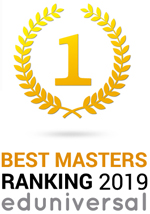For Resilient Collaboration, Start with “Why” and Finish with “How”
At the time of this writing, the COVID-19 pandemic is in full force with over four million confirmed cases and nearly 300,000 deaths worldwide. Grounded flights, shuttered schools, and medical supply shortages are just a few illustrations of the extensive shocks caused by this mighty, microscopic threat. This global coronavirus outbreak upended life as we know it. For many in the United States, the pandemic came as a surprise. Yet, public health experts warned of the potential for a viral outbreak with wide-reaching and lethal consequences. Those professionals urged learning from the past, including learning about the importance of collaboration to solve problems where coordinated action is essential and the cost of failure is enormous.

November, 09 2020 | Heather Getha-Taylor
To effectively respond to a pandemic, or coordinate action on any issue that cannot be resolved by any single organization, sector, or nation, it is important that collaborators understand and articulate the “why” of their collaborative action. This shared sense of purpose is critical for aligning individual efforts and keeping momentum going amid the challenges that emerge along the way. However, in my recent study of 19 voluntary collaborations in the United States, I found that a strong answer to the “why?” of collaboration is not sufficient to keep partnerships going over time. Yes, passion for a cause offers a great start. Partners also need to be able to answer the “how?” of their collaboration in order to successfully continue the journey.
In order to address intractable problems that are not quickly or easily resolved, partners need to focus on the “how” elements that will help sustain their collaboration over time. These include:
- How to develop social capital and trust among partners.
- How to build community buy-in among stakeholders.
- How to ensure continuity of leadership when the partnership experiences turnover.
- How best to structure and govern the collaborative effort.
- As well as how to cultivate resource diversity.
Without attention to these and other “how” elements, the inevitable impacts of stress, internal changes, and/or resource depletion can detour even well-intentioned collaborations that are on roads paved with purpose.
Using a sample of community collaborations from the Foundation Center’s Collaboration Hub, I compared the accounts of those collaborations that endured with those that ended in order to explore the factors that help to explain collaborative resilience, or the ability to rebound from shocks (which can be either positive or negative). I analyzed accounts from representatives of collaborations which were formed to confront a variety of pressing issues such as: environmental protection, community revitalization, animal welfare, health promotion, youth development, and more.
Based on these examples, some surprising findings on the “how” of collaboration are relevant for informing the collaborative action that we desperately need today in order to address boundary-spanning societal problems:
- First, this study revealed that stress is one of the greatest threats to collaborative resilience. Stress in partnerships can take many forms, including in-fighting among partners as well as exhaustion. Given this finding, collaborative “self-care” is a potential blind spot for partnerships. To continue on a strong road ahead, it is important for collaborators to ask: how are you prioritizing self-care for you and your partners?
- Second, a lesson that emerged from this research was that all collaboratives, both those that endured and those that ended, had elements of success and failure along the way. To maintain momentum over time, it is worthwhile to ask: how are you integrating opportunities for learning from both positive and negative experiences along your partnership journey?
- Third, this study revealed a “phoenix effect” in which collaborations have a tendency to rise again from ends that are rarely permanent. However, this ability depends on the strength of the bonds which exist among collaborators. If your partnership is facing a potentially premature end, you might ask: how have we balanced attention to completing tasks with attention to building relationships?
This study provided me with a valuable opportunity to learn from the experiences of knowledgeable collaborators. Their journeys offered lessons on how to work together to address some of society’s most vexing long-term problems. These lessons can serve as guides for the future. One of the most notable takeaways was that these collaborators did not seek praise or reward for their efforts. Rather, they emphasized the value of making a difference and serving as examples for others. Their partnerships (some of which span decades!) also remind us that collaboration is not a passing fad. Rather, it is a requirement. Lasting collaboration requires vision and purpose but it also requires careful attention to the logistical elements of long-term success. In addition, collaboration is hard work. The only easy thing is deciding not to do it.
In our current era, the health and safety of all people depend on the coordinated action of a variety of public, private, and nonprofit actors whose skills, resources, and experience are needed to confront the challenges that this pandemic introduces. The “why” of collaboration in this context is clear and I would argue that the stakes are too high not to take the collaborative path. However, reports of incomplete information sharing, dueling leadership, as well as the overall stress of the situation makes the “how” of collaboration in this moment much more challenging. Learning lessons from the past—and from those partners who have the expertise to inform the pandemic response effort—will certainly require extra effort and also a willingness to learn. Yet, those investments are essential. Our future depends on them.
Heather Getha-Taylor is an Associate Professor in the School of Public Affairs and Administration at the University of Kansas. She is the author or co-author of over 60 journal articles, book chapters, and other scholarly reports. In addition, she serves as Editor-in-Chief of Public Personnel Management. This piece is based on her study “Partnerships that Last,” which was published as a Cambridge Element by Cambridge University Press in 2019. Please feel free to contact Heather with comments or questions at: hgtaylor@ku.edu






















It is mandatory to be registered to comment
Click here to access.
Click here to register and receive our newsletter.